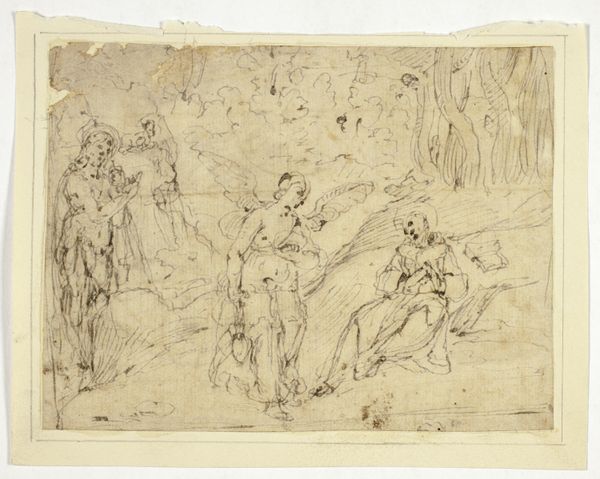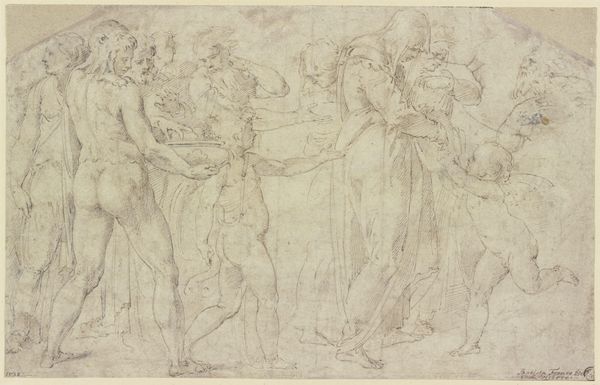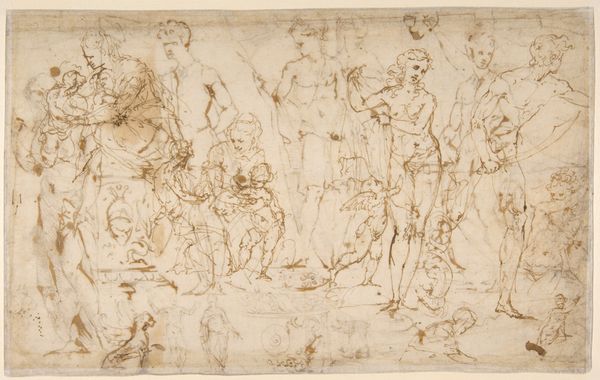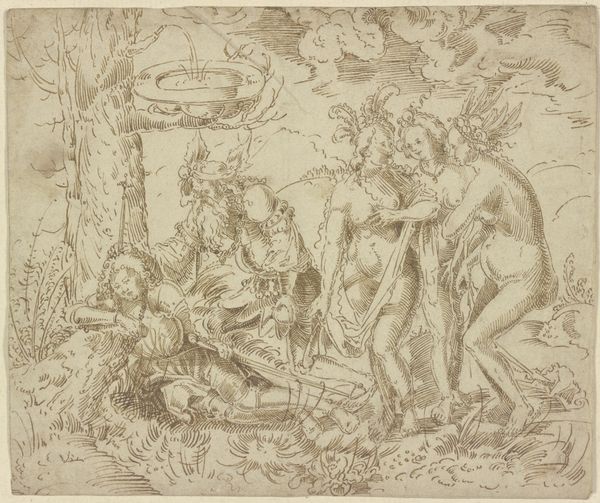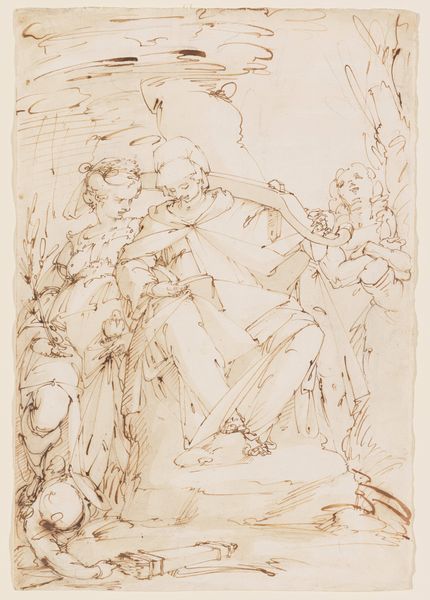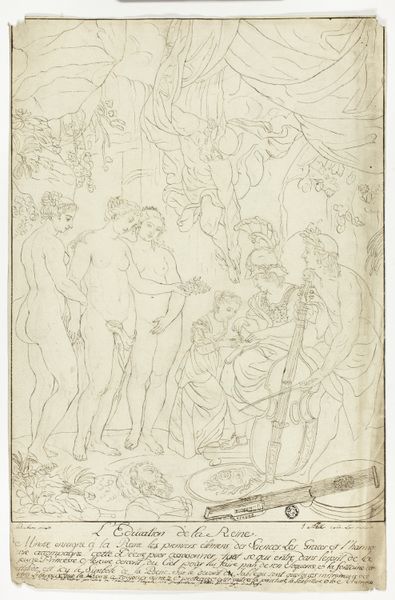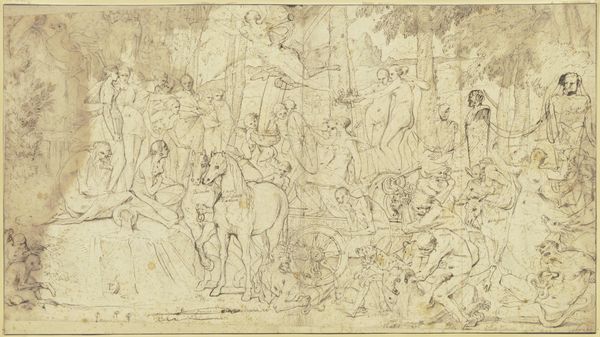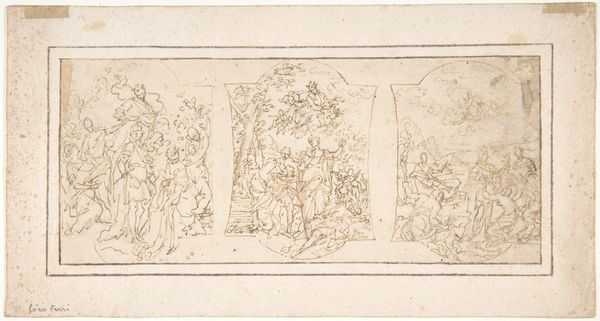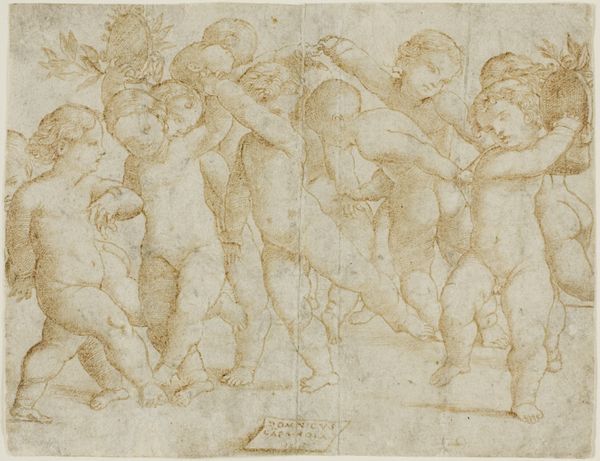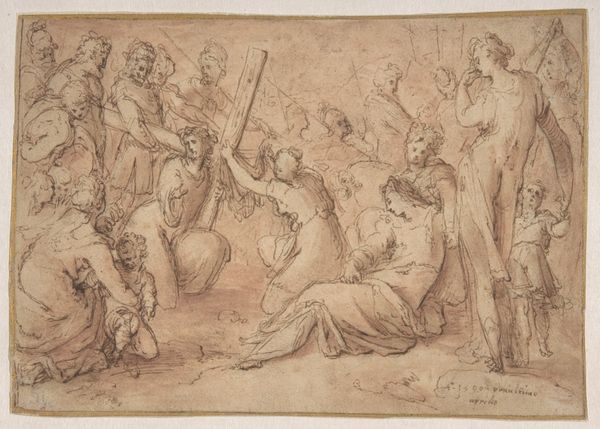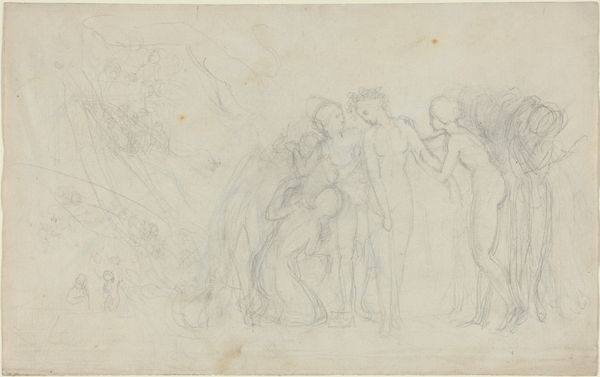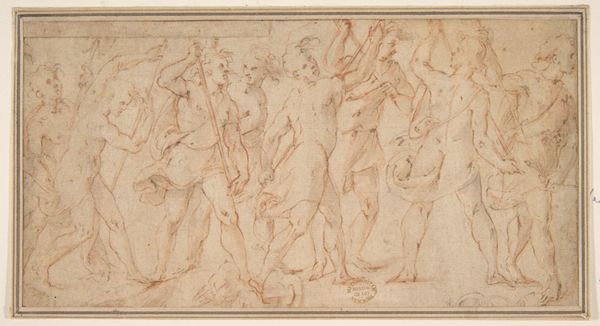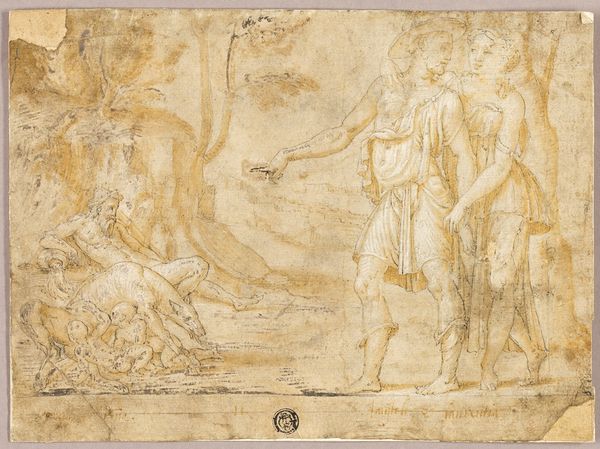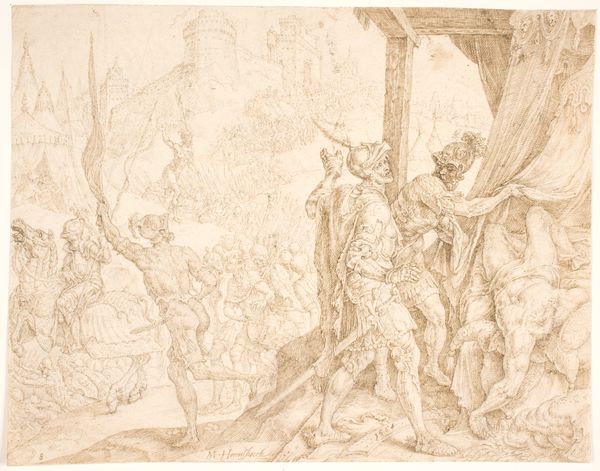
Relief eines römischen Bacchus-Sarkophags mit der Auffindung Ariadnes before 1530
0:00
0:00
drawing, ink, indian-ink, graphite, engraving
#
drawing
#
high-renaissance
#
narrative-art
#
etching
#
figuration
#
ink
#
indian-ink
#
graphite
#
history-painting
#
italian-renaissance
#
engraving
Copyright: Public Domain
Editor: This drawing, "Relief eines römischen Bacchus-Sarkophages mit der Auffindung Ariadnes," was made before 1530 by Battista Franco. It’s rendered in ink, graphite, and Indian ink, and it reminds me of something you’d see on a Roman sarcophagus. All these figures frozen in movement. How do you interpret the story it's trying to tell, visually? Curator: The repetition of forms evokes echoes, doesn’t it? The image is awash with the motifs and symbols related to the narrative, creating a dense tapestry that explores the complexities of memory, both individual and cultural. See how Ariadne’s languid pose, discovered after being abandoned, contrasts sharply with the energetic Bacchus and his entourage? It’s a powerful juxtaposition. What emotions do these contrasting images evoke for you? Editor: I see both sadness in her abandonment and a promise of something new with Bacchus. The figures almost seem to emerge from a dream. Curator: Precisely! Dreams are conduits for symbols from our subconscious. The artist here acts as an interpreter, making these accessible through classical imagery. Consider Bacchus's connection to ecstatic ritual – how does this inform your understanding of the artwork? Editor: I guess it gives a sense of the transformative power of love and perhaps hints at letting go of the past. It also occurs to me that choosing to depict a relief shows incredible depth! Curator: Indeed! This drawing serves as an incredible study for understanding cultural continuity. The past literally informs the present here. Do you find your personal experience influencing your understanding of the drawing? Editor: Absolutely! It's like seeing a conversation across time. Curator: And those visual echoes ensure the conversation continues. Thank you! Editor: Thank you. It has really opened my eyes!
Comments
stadelmuseum about 2 years ago
⋮
Executed around 1530, the drawing depicts a relief on a Roman sarcophagus of the first quarter of the third century now in Blenheim Palace, Oxfordshire. Ariadne is seen as Dionysus found her, with her head resting on the lap of Hypnos (Sleep). Composed of flowing contours, hatching and series of little strokes which form the interior modelling, the work is a characteristic example of this artist’s draughtsmanship. Franco is considered an important representative of those Venetians who devoted themselves to the study of classical antiquity.
Join the conversation
Join millions of artists and users on Artera today and experience the ultimate creative platform.
